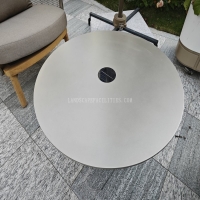Welcome to the website for landscape facilities products and knowledge.
How does the table’s design account for varying levels of user weight and activity?
Modern table design represents a sophisticated fusion of engineering precision and user-centered innovation, specifically addressing the critical challenge of accommodating varying user weights and activity levels. The foundation begins with material selection, where manufacturers employ high-strength steel alloys, reinforced aluminum composites, and industrial-grade polymers that offer exceptional weight-to-strength ratios. These materials undergo rigorous testing to determine their yield strength and fatigue resistance, ensuring they can withstand both static loads and dynamic impacts.
Structural engineering principles play an equally crucial role in weight accommodation. Table legs are strategically designed with optimal cross-sectional geometry and wall thickness to resist buckling under pressure. Many premium tables feature triangular bracing systems or X-frame supports that distribute weight evenly across multiple stress points rather than concentrating it at connection joints. The integration of finite element analysis during the design phase allows engineers to simulate decades of use under different weight scenarios, identifying potential failure points before production.
For high-activity environments such as offices, educational institutions, and healthcare facilities, tables incorporate additional reinforcement at critical wear points. Tabletops often feature honeycomb core structures sandwiched between solid surfaces, creating exceptional rigidity without excessive weight. Leg attachments utilize through-bolt fastening systems with anti-vibration lock washers that maintain structural integrity despite constant movement and shifting loads.
User activity patterns significantly influence design considerations. Tables intended for dynamic environments incorporate reinforced edge banding and impact-resistant corners to withstand frequent collisions and leaning. Height-adjustable mechanisms, whether manual or electric, employ dual-stage lifting columns and industrial-grade motors rated for specific duty cycles that account for both weight and frequency of adjustment.
Manufacturers conduct comprehensive testing protocols that simulate real-world conditions far exceeding normal use parameters. These include cyclic load testing where weights far exceeding advertised capacities are applied and removed thousands of times, simulating years of service in just weeks. Impact resistance testing evaluates how surfaces and structures withstand sudden forces, while stability testing ensures tables remain secure even when weight distribution shifts dramatically.
The integration of these design elements creates tables that safely support users across a broad spectrum of weights and usage intensities while maintaining long-term structural integrity. From commercial applications requiring 500-pound capacities to residential furniture engineered for active family use, contemporary table design successfully balances aesthetic appeal with robust performance through scientific material selection, advanced engineering analysis, and rigorous quality validation.
Related search:

Recommendation
Outdoor stainless steel table with solar-powered ambient lighting feature - excellent design.